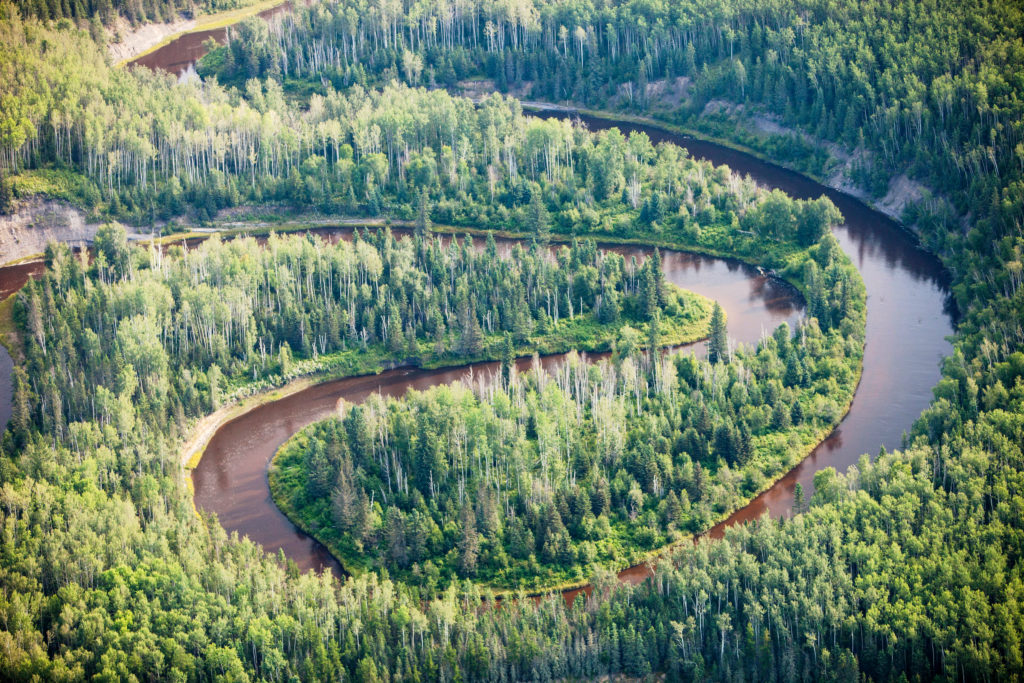What you need to know about COP26, the most crucial climate change summit yet
The UN climate change conference COP26 is arriving on the heels of this past summer’s deadly climate change-fueled wildfires, floods, hurricanes and heat dome. It’s almost as if the planet itself was doing everything it could to underline the magnitude of the moment.
Amidst this meteorological mayhem also came the latest report from the UN Intergovernmental Panel on Climate Change, which made clear that to prevent catastrophic impacts to nature and people, we must accelerate actions to reduce greenhouse gas emissions and limit global warming to 1.5 oC.
The conference, which runs from Oct. 31 to Nov. 12 in Glasgow, Scotland, is where the world’s leaders will aim to do just that by negotiating new and more ambitious actions.
WWF-Canada will be there — sharing groundbreaking new research, supporting Indigenous partners and advocating for bold targets and actions. Here’s what you need to know:

What is COP, anyway?
An acronym for Conference of Parties, it’s the annual summit for the countries who signed the United Nations Framework Convention on Climate Change treaty in 1994 to assess progress on reducing greenhouse gas emissions. Being the 26th such meeting, it’s COP26. (And yes, it was supposed to happen in 2020 but last year’s conference was postponed due to the pandemic.)
If it’s annual, why is this one such a big deal?
Every so often, the summit raises the stakes in the fight against climate change. The Kyoto Protocol went into effect in 2005 and then, a decade later, the Paris Agreement at COP21 took over. It was the most ambitious climate treaty yet — setting strong commitments for mitigation and adaptation, known as nationally determined contributions, or NDCs — and included a recalibration of targets every five years, bringing us to COP26.
Why is it being called “Our last best chance?”
Turned out those last commitments weren’t strong enough. Scientists are warning we’re on track for 2.7oC warming — there’s still time to turn this around, but the window is quickly closing. “Unless there are immediate, rapid and large-scale reductions in greenhouse gas emissions, limiting warming to close to 1.5 oC or even 2 oC will be beyond reach,” according to the IPCC’s recent sixth assessment report, which was called a “code red for humanity.”
To stay close to 1.5 oC, we must cut emissions in half by 2030 and reach net zero by 2050. COP26 is a pivotal moment for governments to set us on this course.
What are some key issues that will be in the spotlight?
Nature-based climate solutions will be a strong theme of COP26. The destruction of nature produces one-third of global greenhouse gas emissions by releasing the natural carbon stored in trees or other vegetation, soils, peatlands and coastal ecosystems.
Stopping that destruction and restoring lost nature can cut emissions by preventing their release and sequestering them in new growth. Many carbon-rich and biodiverse habitats are in Indigenous territories, further emphasizing the importance of Indigenous-led conservation.
Where can I see WWF-Canada at COP?
Our experts will be participating in and hosting two separate events at COP26 that you can join virtually. On Thursday, Nov. 4, senior Arctic conservation specialist Brandon Laforest is supporting an Inuit Circumpolar Council event that will discuss Inuit resilience and solutions to climate change in Arctic ecosystems.
And on Wednesday, Nov. 10, Mary MacDonald, our chief conservation officer, and James Snider, our vice president of science, knowledge and innovation, will be sharing groundbreaking new research that maps Canada’s major carbon stores, a critical tool to holding global warming near 1.5 oC.
Want to know more? Click here to join the Arctic event an click here to join the carbon mapping event. Then follow our social channels for timely updates and reactions over the course of the conference.

